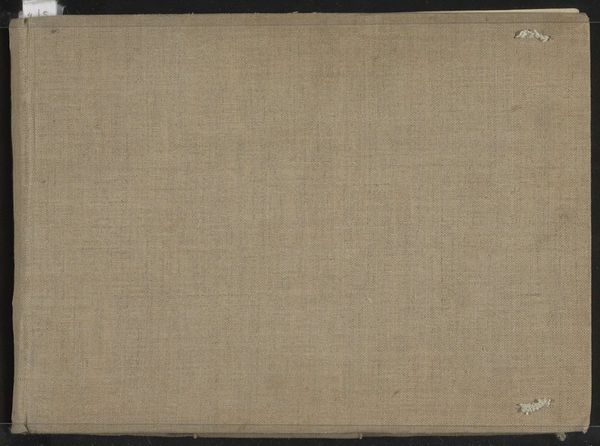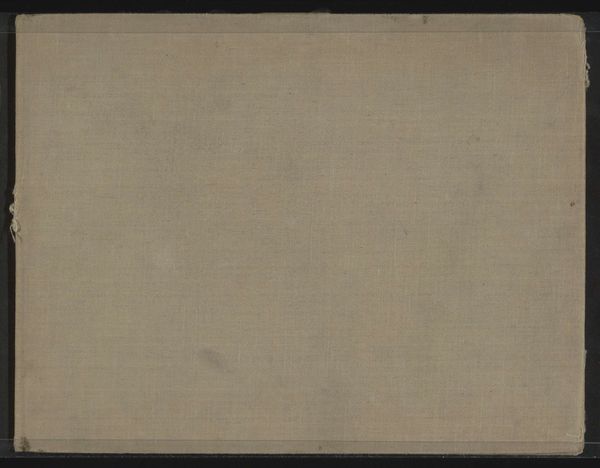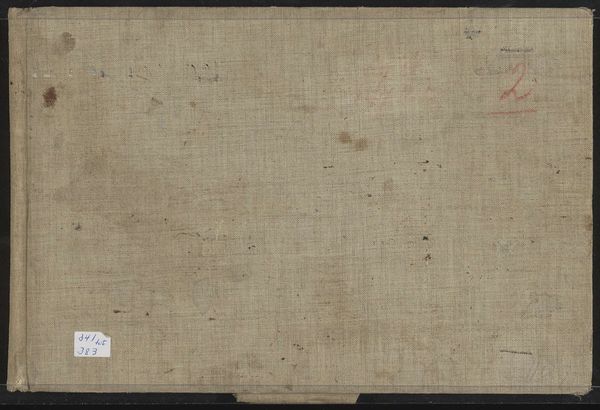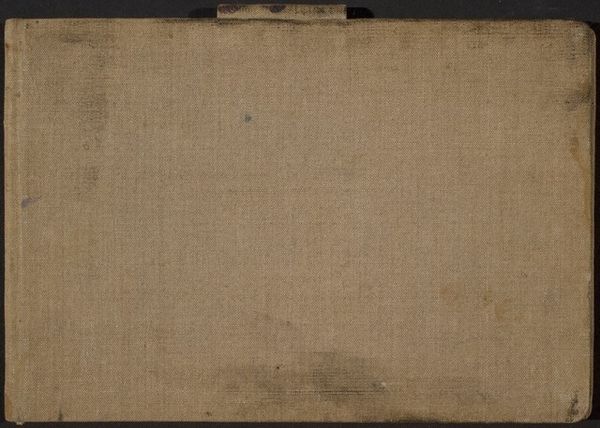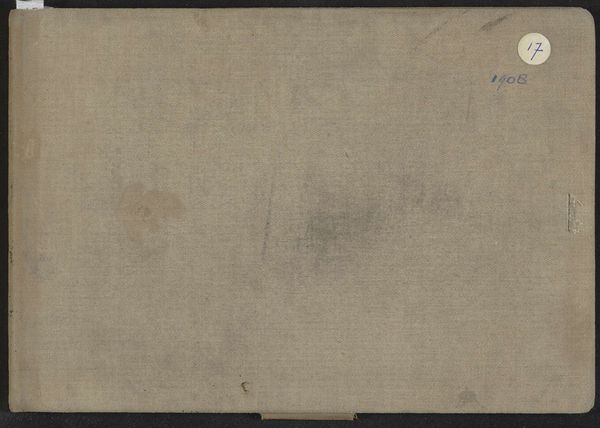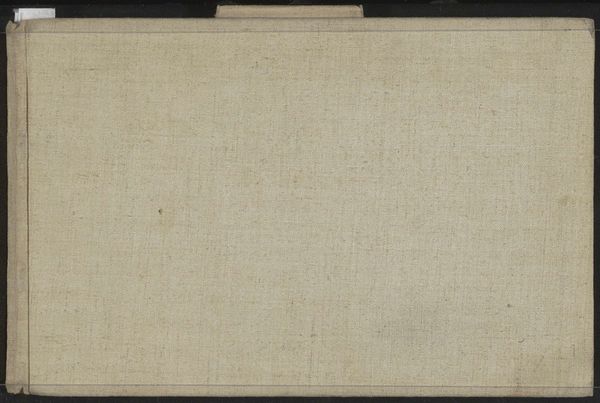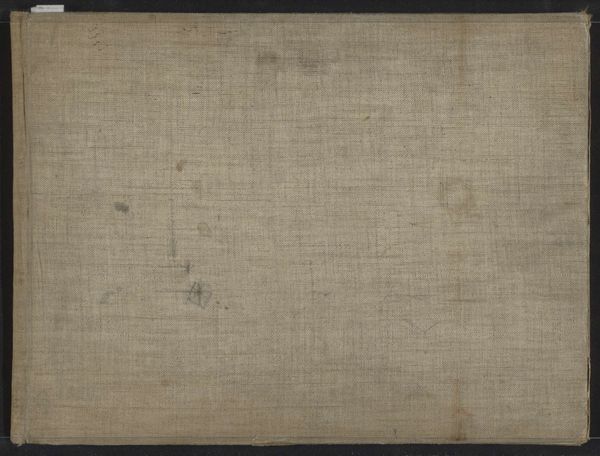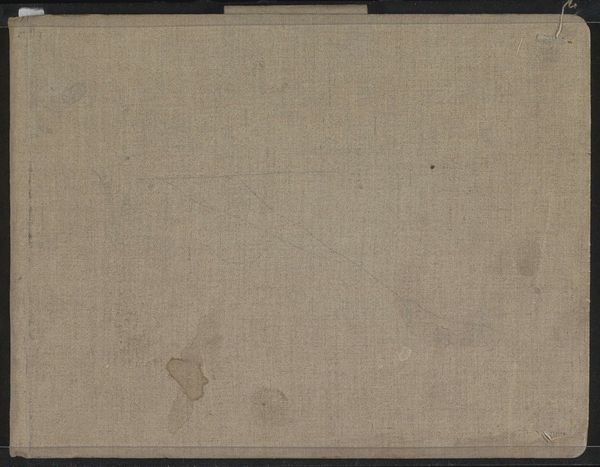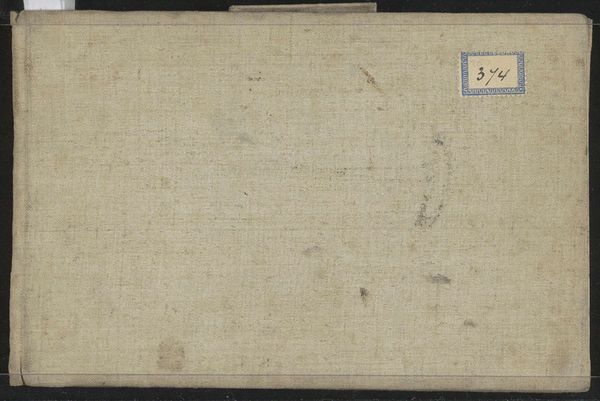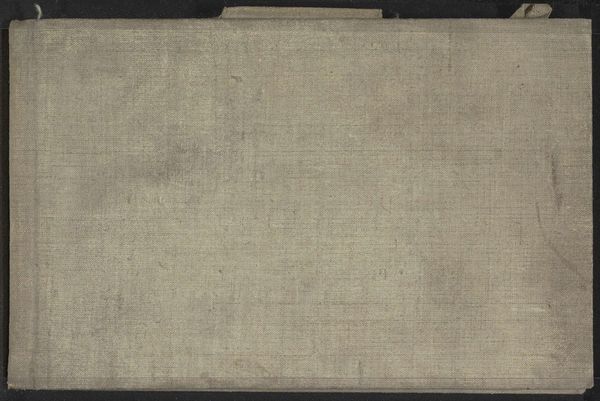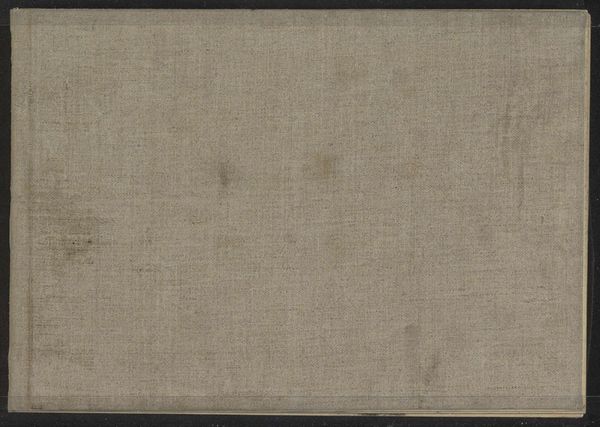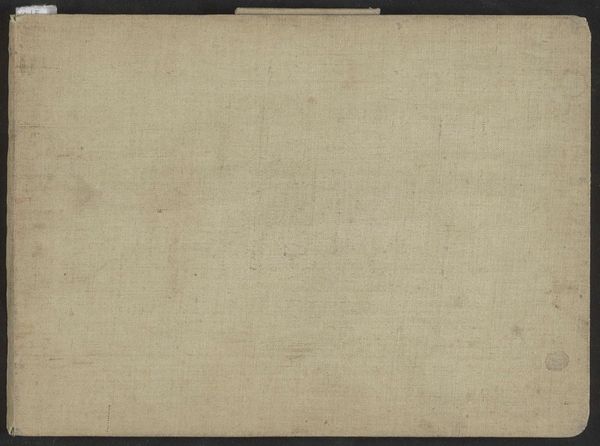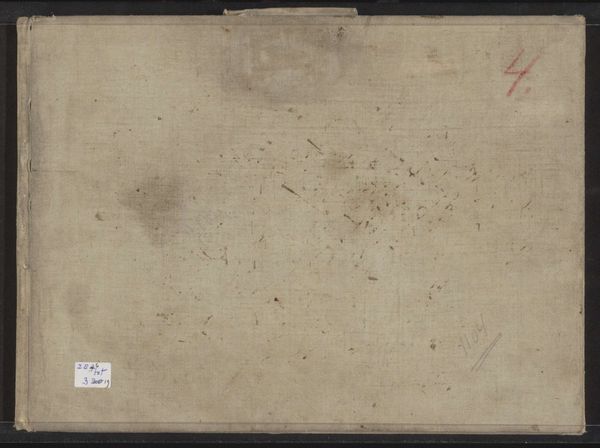
drawing, paper
#
drawing
#
limited colour palette
#
muted colour palette
#
landscape
#
paper
Dimensions: height 224 mm, width 309 mm, thickness 12 mm, width 607 mm
Copyright: Rijks Museum: Open Domain
Editor: So here we have a sketchbook by Jozef Israëls, containing 27 pages, dated between 1834 and 1911. It seems incredibly simple. All I see is the cover in its muted beige paper, which to me hints at intimacy, like the start of a personal journey. What do you see in this piece? Curator: I see potential, a starting point of creative labor. This sketchbook, even empty, signifies a relationship to artistic production. Think about the social context: who made the paper, bound the book, and sold it? Israëls' access to these materials implies a certain class position, doesn't it? Editor: That's interesting! I was just thinking about it as a tool for capturing inspiration. Curator: Exactly, and that 'inspiration' is then shaped by the material constraints and possibilities of drawing. Consider the portability of the sketchbook, versus, say, painting a large canvas. The ease of transport allowed Israëls to capture landscapes on the go. Were these scenes of industrial activity, peasant labor, or leisure for the Bourgeoisie? Editor: Good point. We can tell more when we look at the pages. The materials – paper, pencil or ink – dictate the kind of mark-making possible, the level of detail, and thus the kind of images he chose to capture. Curator: Indeed. And the finished sketches, whatever they depict, became commodities themselves. How would they be circulated? Sold to collectors, reproduced as prints, or remain as studies in the artist's archive? It all speaks to how art functions within a system of production and exchange. Editor: I hadn't considered the sketchbook as an object so embedded in a social and economic web. I was focused on it as simply a tool for artistic expression. Curator: Looking at the materiality opens it up; it reveals much about the conditions under which art is created and consumed. I found that helpful. Editor: Me too. It shifts my perspective. I need to remember the social context too. Thanks!
Comments
No comments
Be the first to comment and join the conversation on the ultimate creative platform.
